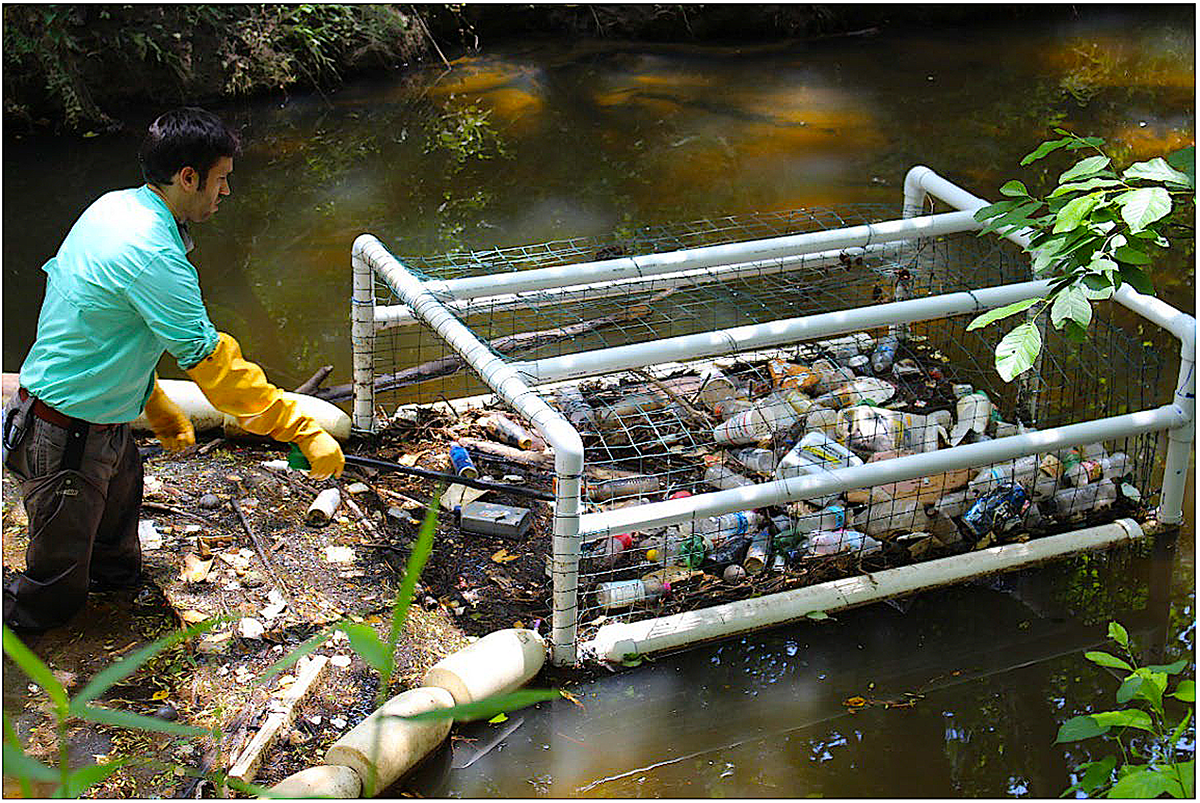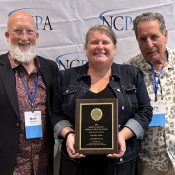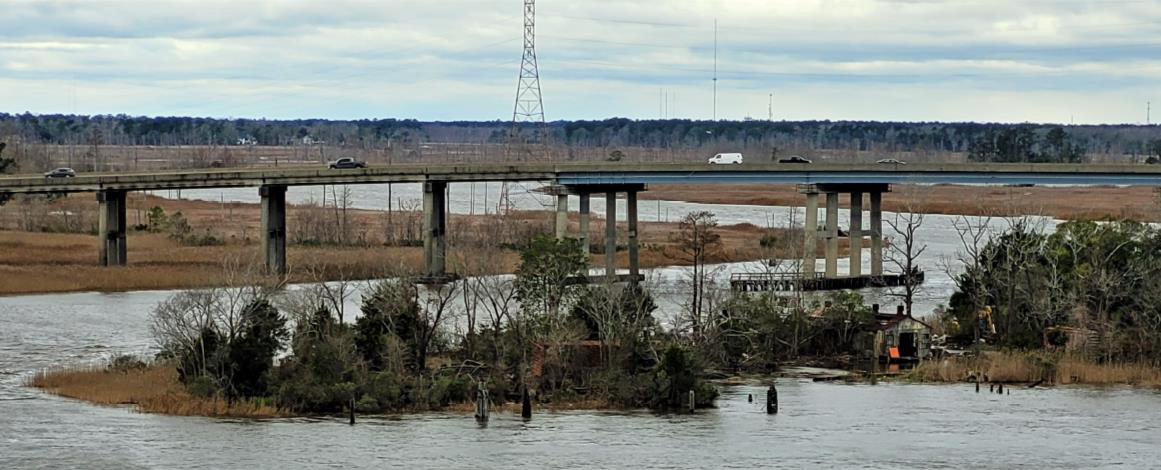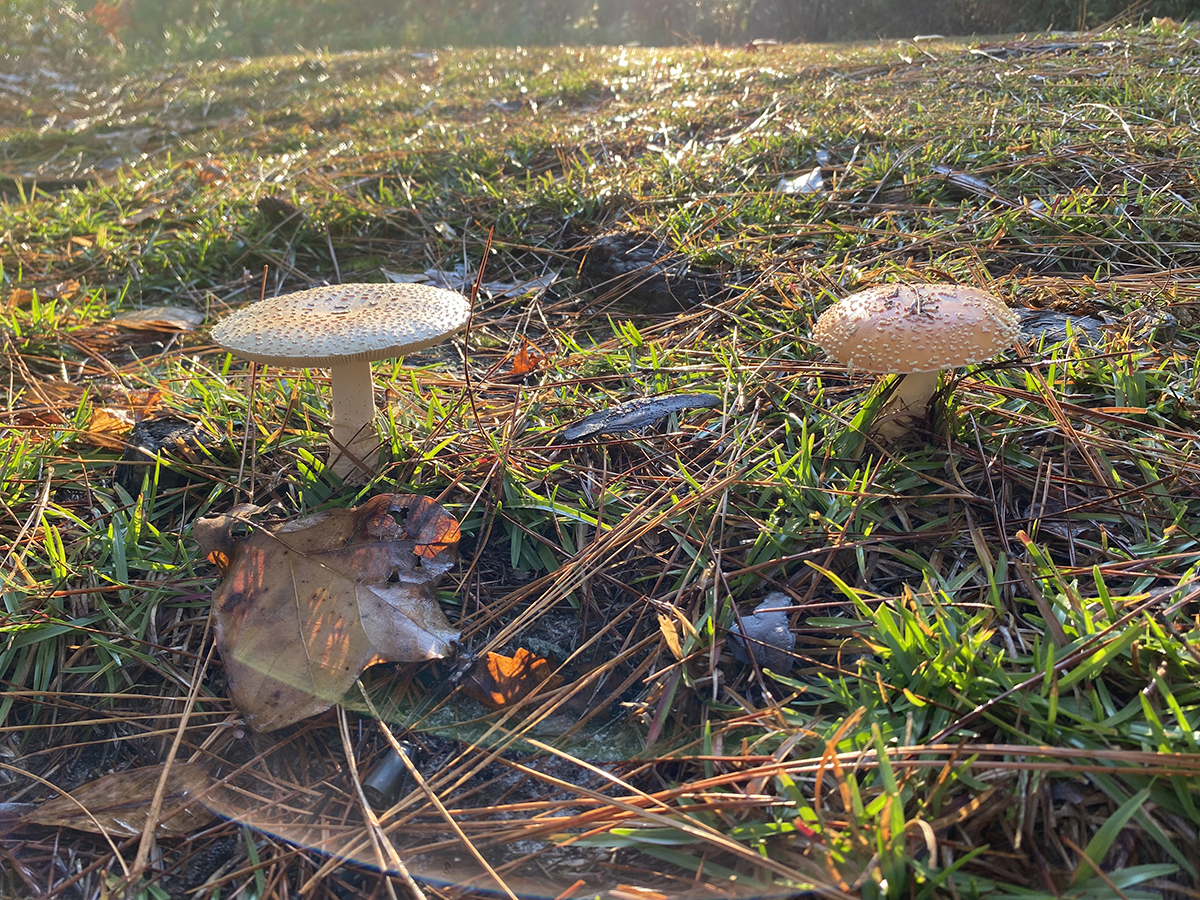
An overwhelming majority of litter captured over the course of three years by in-stream traps set up in watersheds throughout the state was plastic waste, according to a recently published study.
About 96% of litter North Carolina waterkeeper organizations and their volunteers removed from trash traps between June 2021 and November 2024 consisted of plastics, said Dr. Nancy Lauer, lead author of the paper published in the journal Community Science.
Supporter Spotlight
“Plastic is lightweight, it’s buoyant, it floats easily,” Lauer, a staff scientist and lecturing fellow with the Duke Environmental Law and Policy Clinic, said in a recent telephone interview. “The plastic items, they can very well make their way through the stormwater system, through the stream and end up in the trash trap before they are ever going to biodegrade.”
During the course of the three-year study, 150,750 pieces of litter were removed from 21 traps.
The litter traps were funded through a 2020 North Carolina Environmental Enhancement Grant as part of a statewide microplastics research and pollution-prevention infrastructure project sponsored by Waterkeepers Carolina, a group of 15 licensed waterkeepers in the state.
By removing and documenting the litter that gets caught in the traps, waterkeeper organizations are able to get an understanding of the most prevalent types of litter entering North Carolina rivers. They are also able to look at correlations between litter accumulation and characteristics such as development, impervious surface, road density and human populations within different watersheds.
Using the data collected by those waterkeeper organizations, researchers can provide a big picture of riverine litter in the state and use that to shape policy.
Supporter Spotlight
For this study, seven waterkeeper organizations and their volunteers were tasked with separating and organizing the trash they removed from traps into categories.
Those categories included plastic film, hard plastic, polystyrene foam, metal, glass; and paper covering items, such as drink containers made of plastic, glass and metal, plastic straws and stirrers, cup lids, bottle caps and food wrappers.
Fragments of polystyrene foam from consumer products like Styrofoam cups, food takeout containers and packing materials were removed from all 21 traps in “very high” loads, Lauer said.

Those fragments and single-use plastic bottles made up about 83% of the litter that was collected and documented.
“If you do a cleanup of a roadside, you’re going to find a lot more plastic bags, a lot more food wrappers and we would find those occasionally,” Lauer said. “But I think that those just tend to snag on branches or get weighted down in the stream banks before they would ever be able to reach the trap. It was sort of eye opening to realize which of these plastic items, when they get into the environment, are extremely mobile. It seems like the trash traps are telling us that Styrofoam fragments and plastic bottles can really effectively be transported by surface waters downstream just because they made up such a large fraction of what we were finding in the traps.”
The paper is the latest to highlight single-use plastic pollution in the state.
A 14-page report published last March and created through a collaboration of nonprofits and the policy clinic concluded that state agencies, local governments and nonprofits spent more than $56 million in 2023 cleaning up more than 7,000 tons of litter.
Related: State’s fix for costly litter problem ‘not efficient or sufficient’
That same year, legislators injected language into the state budget prohibiting counties and cities from adopting rules, regulations, ordinances, or resolutions that restrict, tax, or charge fees on auxiliary containers.
The provision stopped locally elected officials in Asheville from voting on a proposed ban of single-use plastic bags and Styrofoam food containers. The law also barred local elected officials in Durham from deciding whether to require retailers tack on a 10-cent fee for each plastic bag given to customers in restaurants, grocery stores and shops.
That law “dealt a huge blow” to North Carolina, Lauer said.
The volume of single-use plastics removed from riverine traps clearly indicates that type of pollution is a huge issue in the state, she said
“I think what this data really highlights is that there’s still work that needs to be done and that work now, because of that preemption law, can’t necessarily be done on the local level in the same way that it could before,” Lauer said. “But there are state-level actions like banning Styrofoam, or a bottle bill that would incentivize people to return their bottles to receive a small deposit. Those could be really effective at reducing stream litter.”
She said it is important to keep in mind that there are types of litter that aren’t being captured in trash traps.
“These traps have a lot of positive aspects, but ideally we want to live in a world where we don’t need them because that trash is never ending up in our streams,” Lauer said. “I feel really strongly that there needs to be action by the corporations and the businesses and the government to stop these items from being provided in the first place. We go through life and you can make choices as an individual, but single-use plastics are still so prevalent that it can feel impossible to avoid them, no matter how hard you try.”







